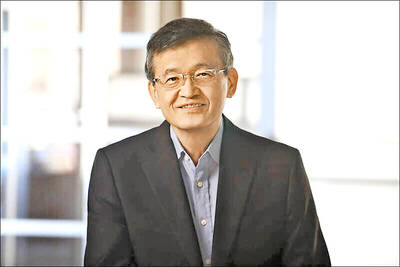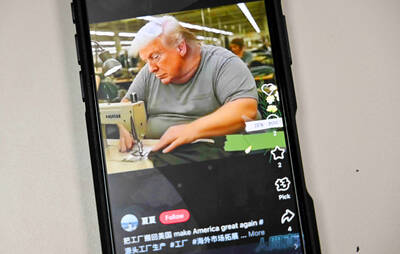Largan Precision Co (大立光), a major smartphone camera lens supplier to Apple Inc, might face limited earnings growth this year given the industry’s slow transition to higher-resolution lenses, Yuanta Securities Investment Consulting Co (元大投顧) Taipei-based analyst Jeff Pu (蒲得宇) said.
“With limited earnings upside and high market expectations, we continue to suggest investors take profit on the stock,” Pu wrote in a note to clients on Thursday last week.
Largan reported sales of NT$4 billion (US$127 million) for last month, up 66 percent year-on-year, but down 30 percent from December last year, falling below market expectations of a 20 percent decline month-on-month.
Pu said that Largan’s sales for last month came in below expectations due to lower demand for Apple iPhones, a smaller proportion of iPhone 6 Plus models in Largan’s shipment mix and weak demand from Chinese handset brands.
“February will be affected by fewer working days, and we don’t expect much of a recovery in March owing to the fast-falling number of iPhone [shipments],” said Pu, who maintained his “downgrade” rating on Largan shares and his price target of NT$2,650 for the stock.
Pu said that the camera specifications of the next-generation iPhone, dubbed iPhone 6S, will stay the same as the current iPhone 6 at 8-megapixels, limiting potential catalysts to push Largan’s stock price higher in the second half of the year.
Pu said that although the migration to 8-megapixel and 13-megapixel lenses would remain strong among Chinese vendors of mid-tier and low-end phones, upgrades to 16-megapixel and 20-megapixel lenses for flagship phones would be slow given the limited supply of CMOS sensors — used to convert light into electrons.
“On the other hand, we expect the specification migration in high-end models to be from new features, such as optical image stabilization and fast autofocus, which benefit module makers more than lens makers, in our view,” Pu said.
Data from Japanese research firm Techno Systems Research Co showed that Japan-based Sony Corp led the 2013 global CMOS image sensor market with a 33 percent share by sales value.
Sony, whose CMOS sensors are used in handsets made by Apple, Samsung Electronics Co Ltd and Huawei Technologies Co Ltd (華為), announced on Monday last week that it plans to increase its production capacity for stacked CMOS image sensors from its current level of about 60,000 wafers per month to about 80,000 wafers per month by the end of June next year.

Intel Corp chief executive officer Lip-Bu Tan (陳立武) is expected to meet with Taiwanese suppliers next month in conjunction with the opening of the Computex Taipei trade show, supply chain sources said on Monday. The visit, the first for Tan to Taiwan since assuming his new post last month, would be aimed at enhancing Intel’s ties with suppliers in Taiwan as he attempts to help turn around the struggling US chipmaker, the sources said. Tan is to hold a banquet to celebrate Intel’s 40-year presence in Taiwan before Computex opens on May 20 and invite dozens of Taiwanese suppliers to exchange views

Application-specific integrated circuit designer Faraday Technology Corp (智原) yesterday said that although revenue this quarter would decline 30 percent from last quarter, it retained its full-year forecast of revenue growth of 100 percent. The company attributed the quarterly drop to a slowdown in customers’ production of chips using Faraday’s advanced packaging technology. The company is still confident about its revenue growth this year, given its strong “design-win” — or the projects it won to help customers design their chips, Faraday president Steve Wang (王國雍) told an online earnings conference. “The design-win this year is better than we expected. We believe we will win

Chizuko Kimura has become the first female sushi chef in the world to win a Michelin star, fulfilling a promise she made to her dying husband to continue his legacy. The 54-year-old Japanese chef regained the Michelin star her late husband, Shunei Kimura, won three years ago for their Sushi Shunei restaurant in Paris. For Shunei Kimura, the star was a dream come true. However, the joy was short-lived. He died from cancer just three months later in June 2022. He was 65. The following year, the restaurant in the heart of Montmartre lost its star rating. Chizuko Kimura insisted that the new star is still down

While China’s leaders use their economic and political might to fight US President Donald Trump’s trade war “to the end,” its army of social media soldiers are embarking on a more humorous campaign online. Trump’s tariff blitz has seen Washington and Beijing impose eye-watering duties on imports from the other, fanning a standoff between the economic superpowers that has sparked global recession fears and sent markets into a tailspin. Trump says his policy is a response to years of being “ripped off” by other countries and aims to bring manufacturing to the US, forcing companies to employ US workers. However, China’s online warriors